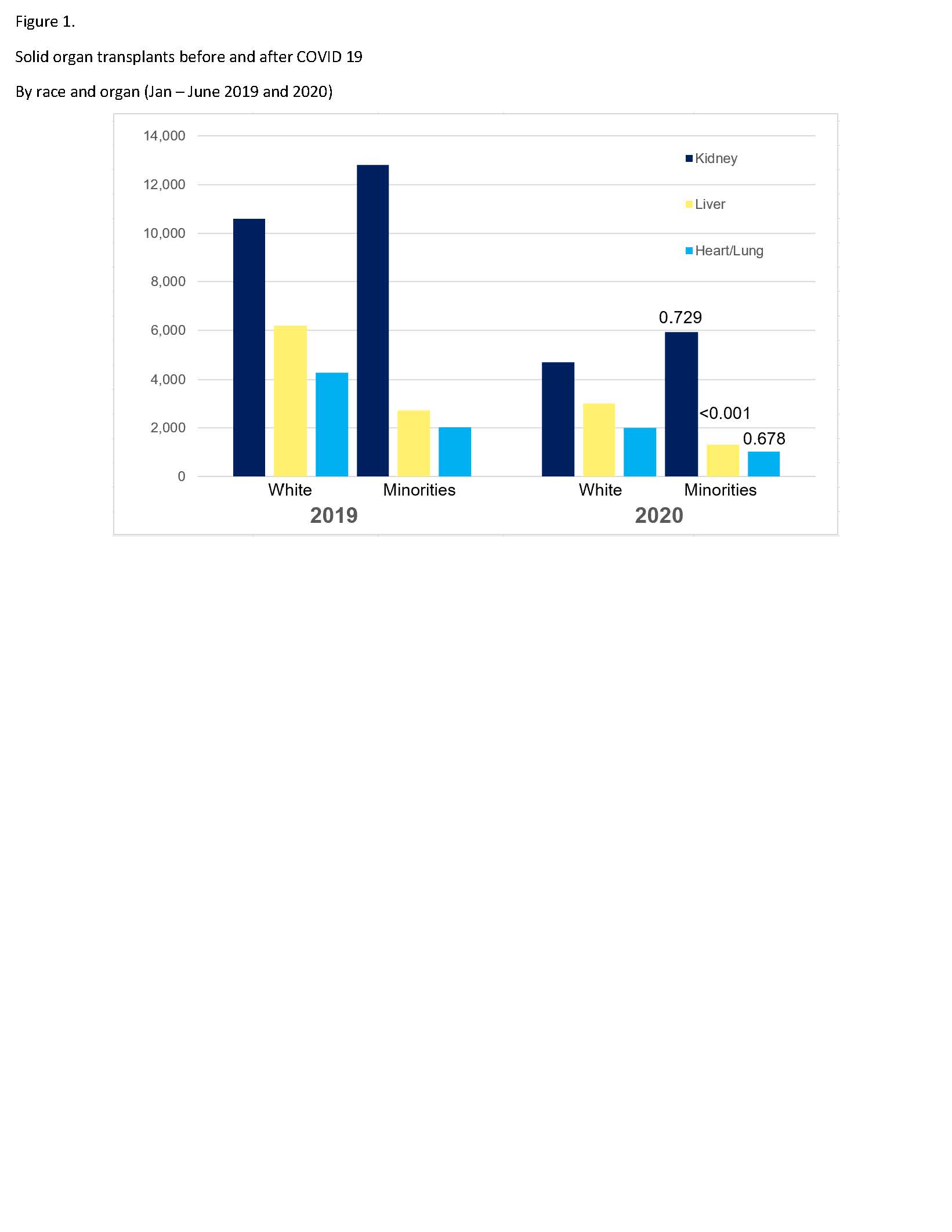Impact of COVID-19 on Solid Organ Transplantation
E. Sampson1, S. Hall2, K. Robichaux3, A. Kumar2, N. Kemmer4, J. Buggs5
1Lake Erie College of Osteopathic Medicine, Tampa, FL, 2Morsani College of Medicine, University of South Florida, Tampa, FL, 3Honors College, University of South Florida, Tampa, FL, 4Transplant Hepatology, Tampa General Hospital, Tampa, FL, 5Transplant Surgery, Tampa General Hospital, Tampa, FL
Meeting: 2021 American Transplant Congress
Abstract number: 125
Keywords: Infection, Inflammation, Kidney transplantation, Liver transplantation
Topic: Clinical Science » Infectious Disease » All Infections (Excluding Kidney & Viral Hepatitis)
Session Information
Session Time: 4:30pm-5:30pm
 Presentation Time: 5:00pm-5:05pm
Presentation Time: 5:00pm-5:05pm
Location: Virtual
*Purpose: Patterns of racial disparities have been identified throughout the history of American medicine. In December 2019, COVID-19 was first detected and has had a significant impact at a global level. Evidence suggests that racial and ethnic minorities bear a disproportionate COVID-19 burden. Since the onset of the pandemic, there has been a decrease in the number of solid organ transplants (SOT) performed. The main objective of this study was to evaluate the impact of COVID-19 on the field of solid organ transplantation.
*Methods: We conducted a retrospective cohort study on consecutive solid organ transplants performed in the U.S. before and after the onset of the COVID-19 pandemic from January 2019 through June 2020. We utilized national data from the United Network for Organ Sharing (UNOS) and the Organ Procurement Transplantation Network (OPTN). Deidentified data were analyzed on patients who underwent either kidney, liver, heart, lung, or combined heart and lung transplants. The number of transplants based on UNOS regions, age, gender, and ethnicity were analyzed.
*Results: Our data demonstrated significant declines in liver transplants among ethnic minorities compared to the white population (p<0.001). In patients under 18, liver transplants were significantly reduced (p<0.001), while liver and heart/lung transplants were most impacted in the 18-49 age group (p<0.001). When comparing the number of SOTs by UNOS region, a significant decrease in kidney transplants was observed across regions 1, 7, 8, 9, and 10 (p<0.001). Additionally, liver transplants were markedly decreased in region 5 (p<0.001), as well as regions 4 and 7 (p<0.05). Finally, regions 2 and 9 demonstrated a statistically significant drop in heart/lung transplants (p<0.05).
*Conclusions: Amid the pandemic, organ transplantation has been deemed a medical emergency and yet there has been a significant decline in the number of transplants across UNOS regions, age groups, genders, organ types, and ethnicities. Despite the unique challenges brought about by COVID-19, physicians have managed to continue to carry out lifesaving transplant procedures.
To cite this abstract in AMA style:
Sampson E, Hall S, Robichaux K, Kumar A, Kemmer N, Buggs J. Impact of COVID-19 on Solid Organ Transplantation [abstract]. Am J Transplant. 2021; 21 (suppl 3). https://atcmeetingabstracts.com/abstract/impact-of-covid-19-on-solid-organ-transplantation/. Accessed December 30, 2025.« Back to 2021 American Transplant Congress

